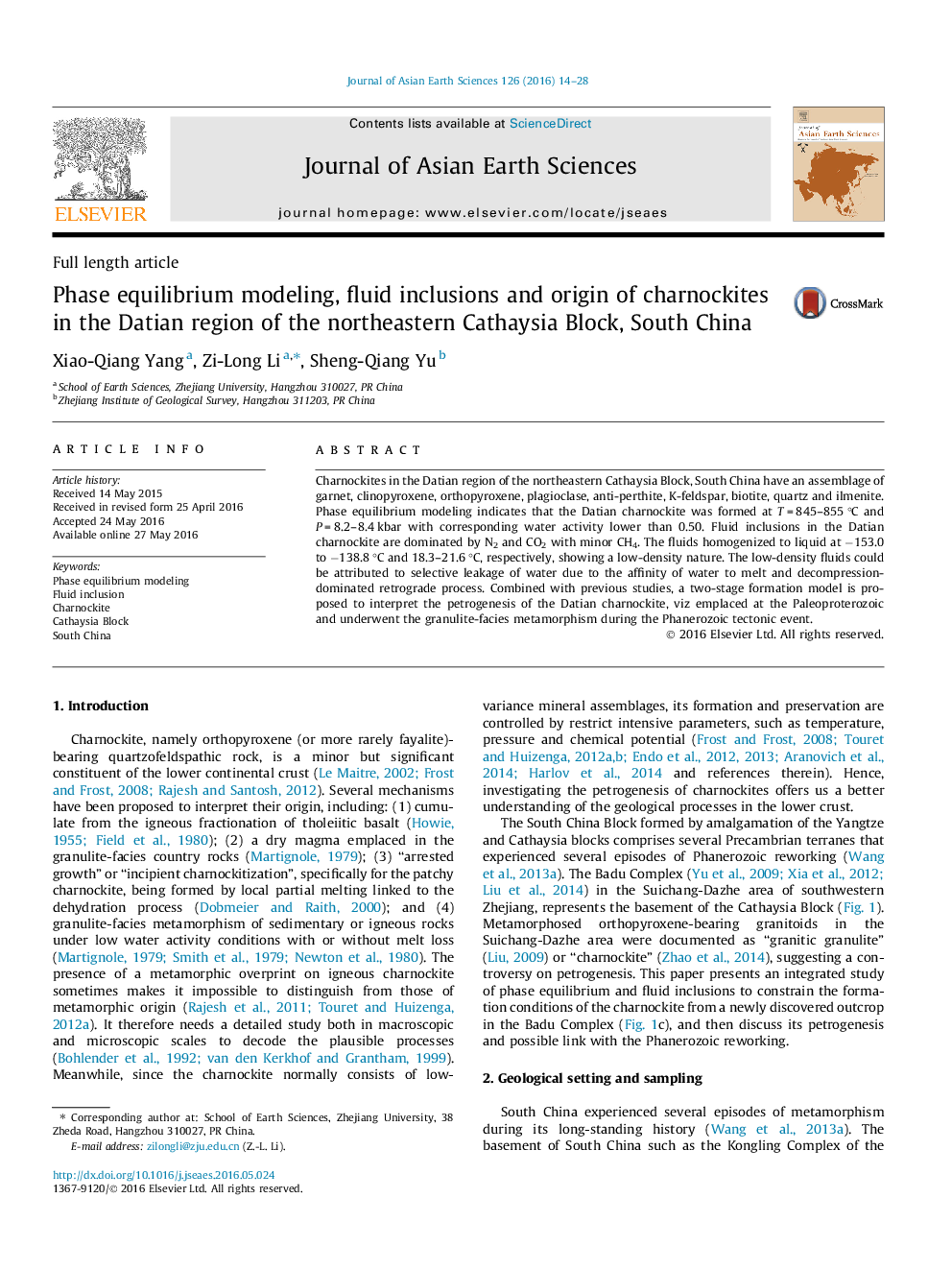| Article ID | Journal | Published Year | Pages | File Type |
|---|---|---|---|---|
| 4729966 | Journal of Asian Earth Sciences | 2016 | 15 Pages |
•Pseudosection modeling and fluid inclusion studies indicated granulite-facies metamorphism.•A two-stage formation model was proposed to interpret petrogenesis of Datian charnockite.•Confirmation of granulite-facies metamorphism suggests Phanerozoic reworking on crystalline basement of South China.
Charnockites in the Datian region of the northeastern Cathaysia Block, South China have an assemblage of garnet, clinopyroxene, orthopyroxene, plagioclase, anti-perthite, K-feldspar, biotite, quartz and ilmenite. Phase equilibrium modeling indicates that the Datian charnockite was formed at T = 845–855 °C and P = 8.2–8.4 kbar with corresponding water activity lower than 0.50. Fluid inclusions in the Datian charnockite are dominated by N2 and CO2 with minor CH4. The fluids homogenized to liquid at −153.0 to −138.8 °C and 18.3–21.6 °C, respectively, showing a low-density nature. The low-density fluids could be attributed to selective leakage of water due to the affinity of water to melt and decompression-dominated retrograde process. Combined with previous studies, a two-stage formation model is proposed to interpret the petrogenesis of the Datian charnockite, viz emplaced at the Paleoproterozoic and underwent the granulite-facies metamorphism during the Phanerozoic tectonic event.
